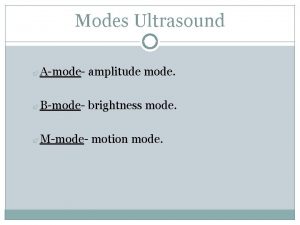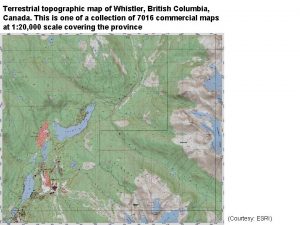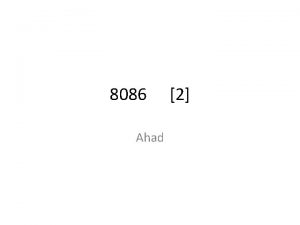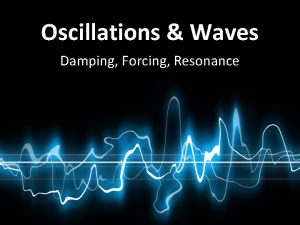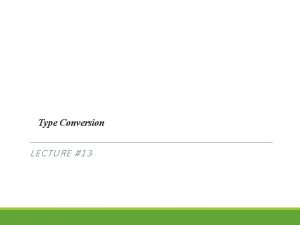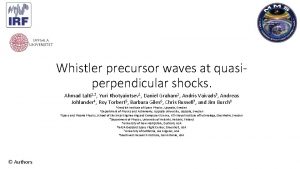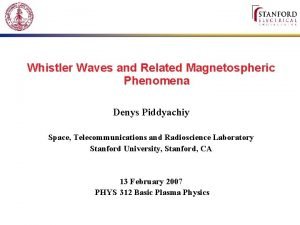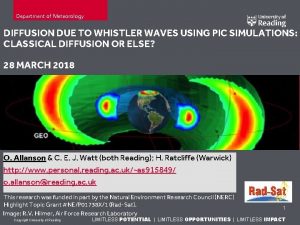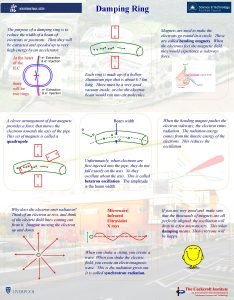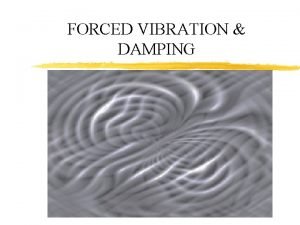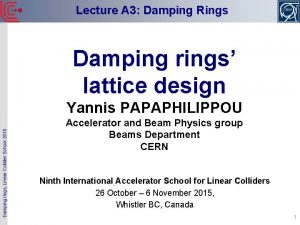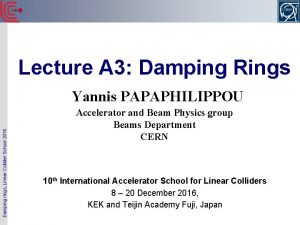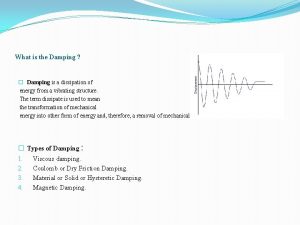Damping of Whistler Waves through Mode Conversion to






















- Slides: 22

Damping of Whistler Waves through Mode Conversion to Lower Hybrid Waves in the Ionosphere X. Shao, Bengt Eliasson, A. S. Sharma, K. Papadopoulos, G. Milikh Dept. of Physics and Astronomy, Univ. of Maryland

Background • The VLF waves excited by powerful ground-based transmitter propagate in the Earth-ionosphere waveguide and leaks through the ionosphere to the magnetosphere. • Recent studies [Starks et al. 2008] using combined Earth -ionosphere waveguide model and ray-tracing model found that the model systematically overestimates the VLF wave field strength in the plasmasphere owing to VLF transmitter by 20 d. B at night and 10 d. B during the day. • We present a numerical model to simulate linear mode conversion between whistler wave and lower hybrid wave due to the interaction with short scale density striations such as field-aligned irregularities in the Earths ionosphere. • We study the damping of whistler wave due to this mode conversion.

Starks et al. , 2008: The 20 d. B loss problem “Helliwell Absorption Model, VLF ionospheric absorption curves from Helliwell [1965, Figures 3 – 35]; approx-Helliwell, daytime VLF absorption curves using night Helliwell values plus 26 d. B. ”

Starks et al. , 2008

Starks et al. , 2008: The 20 d. B loss problem • “Given that the models all agree at 150 km, and that the satellite data shows similar error whether taken directly above the transmitter at 600, 1500 or 7000 km, or conjugate to it at the end of a very long inter-hemispheric propagation path, it is clear that the ‘‘missing power’’ is lost somewhere in the ionosphere. ” • “Possible candidates for loss processes include enhanced D region reflectivity due to transmitter modification, scattering from transmitter-induced irregularities, and conversion to nonpropagating lower hybrid modes. ” • Current Fixes: “a simple constant correction factor, adjusting our initial conditions downward by 23 d. B at night and 10 d. B during the day (with no changes to the added noise floor). ” • “Additional focused research into the transionospheric propagation of whistler mode VLF radiation is clearly needed”

Helliwell’s whistler wave absorption model due to electron-neutral collision 20 k. Hz Day Time 2 k. Hz 20 k. Hz Use interpolation for other frequencies: Helliwell, 1965 Night Time 2 k. Hz

Models to account for 20 d. B Loss • Mishin et al. , 2010: Nonlinear VLF effects (parametric instabilities) • Bell et al. , 2008: Plasma density irregularities for linear mode conversion Possible Models: • Ganguli et al. , 2010: Three Dimensional Whistler Turbulence.

Modeling Whistler Wave and Lower Hybrid Wave Conversion Linked through striation • Formulation by Eliasson and Papadopoulos, 2008 • Two equations to describe the evolution of whistler and LH wave. • Coupling linked through gradients provided by density striations. • Include inhomogeneous ionosphere. • Collisions can be taken into account.

Introducing Inhomogeneous Ionosphere Profile

Simulation Set-up Periodic B. C. Non-Uniform electron density Whistler wave frequency = 18 k. Hz 120 m 90 km B field 120 km 150 km 300 x 1200 grids Density Striation: Gaussian shape with width = 2 m, 8 m and 15 m, respectively. Density deviation: 5%.

Striation width plays an importance role LH Wave : Striation width for resonant LH-whistler conversion for wave frequency f = 18 k. Hz Whistler Wave : Resonant Mode Conversion : Width = λ﬩ Width = ½ λ﬩ Resonant Striation Width: (n is integer) Eliasson and Papadopoulos, 2008

Whistler Wave Propagation through Striations with 8 m Width Density Low-Hybrid E Whistler Wave B 90 km 150 km 210 km

Whistler Wave Propagation through striations with 8 m width T =1. 2 ms Amplitude increase due to slow down of whistler wave

Whistler Wave Propagation through striations with 8 m width Without mode conversion With mode conversion 16 d. B Loss

Simulation with Non-Uniform Density: 2 m striation width Density Low-Hybrid E Whistler Wave B 90 km 120 km 150 km

Whistler Wave Propagation through striations with 2 m width Without mode conversion With mode conversion

Whistler Wave Propagation through striations with 15 m width Without mode conversion With mode conversion

Comparison of Whistler Wave Attenuation Factors Whistler-LH Wave Conversion with 8 m striation width Electron-Neutral Collision Whistler-LH Wave Conversion with 15 m striation width 2 m striation width

Whistler Wave Propagation through striations with mixed width Density Without mode conversion With mode conversion Low-Hybrid E Whistler Wave B ~ 10 d. B 90 km 120 km 150 km Striation width varies from 2 to 10 m

Summary • At the altitudes between 90 to 150 km in the ionosphere, the energy of whistler wave energy can be converted to the lower hybrid wave and the lower hybrid wave can be subsequently damped by ion-neutral collisions. • Striation width plays an important role in Whistler-LH wave conversion efficiency. • With 2 to 10 m mixed striation width (5 striations within 120 m column), the whistler wave can be attenuated by ~ 10 d. B, propagating from 90 to 160 km. • Need further experimental and observational investigations on striation width statistics and whistler wave and lower Hybrid wave conversion.

Simulation with uniform density and without collisions Low-Hybrid E Whistler Wave Magnetic Field

Simulation with uniform density and ion/neutral collisions Low-Hybrid E Whistler Wave Magnetic Field
 What is a-mode ultrasound used for
What is a-mode ultrasound used for Whistler topographic map
Whistler topographic map Conversion of timber
Conversion of timber Mechanical and electromagnetic waves similarities
Mechanical and electromagnetic waves similarities Example mechanical waves
Example mechanical waves Constructive waves and destructive waves difference
Constructive waves and destructive waves difference Carbon dioxide temperature
Carbon dioxide temperature Surface waves and body waves
Surface waves and body waves Differences between mechanical and electromagnetic waves
Differences between mechanical and electromagnetic waves Mechanical waves and electromagnetic waves similarities
Mechanical waves and electromagnetic waves similarities High and low frequency waves
High and low frequency waves Compare and contrast p waves and s waves using venn diagram
Compare and contrast p waves and s waves using venn diagram Is a seismic wave mechanical or electromagnetic
Is a seismic wave mechanical or electromagnetic What type of waves are sound waves? *
What type of waves are sound waves? * Mechanical waves vs electromagnetic waves
Mechanical waves vs electromagnetic waves Sound waves are longitudinal waves true or false
Sound waves are longitudinal waves true or false What do all waves transmit
What do all waves transmit Sound waves longitudinal waves
Sound waves longitudinal waves Reset pin in 8086
Reset pin in 8086 In auto-reload mode a timer t0 in 8051 operates as
In auto-reload mode a timer t0 in 8051 operates as Focus mode and diffuse mode
Focus mode and diffuse mode Gartner mode 1 mode 2
Gartner mode 1 mode 2 Mode địa chỉ tức thì là mode
Mode địa chỉ tức thì là mode
